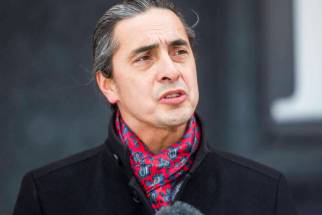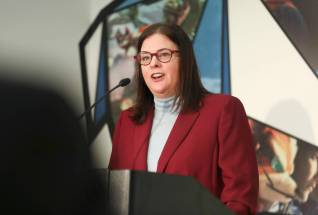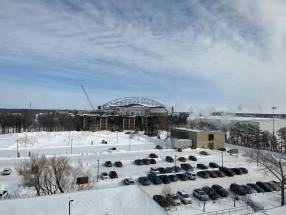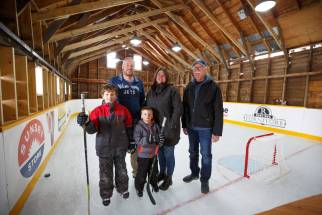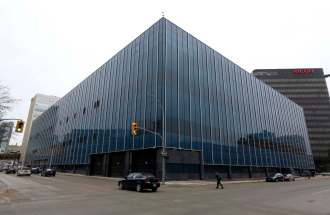The same, but very different Kindness, commitment amplified in pandemic-muted city hospital corridors
Read this article for free:
or
Already have an account? Log in here »
To continue reading, please subscribe:
Monthly Digital Subscription
$0 for the first 4 weeks*
- Enjoy unlimited reading on winnipegfreepress.com
- Read the E-Edition, our digital replica newspaper
- Access News Break, our award-winning app
- Play interactive puzzles
*No charge for 4 weeks then price increases to the regular rate of $19.00 plus GST every four weeks. Offer available to new and qualified returning subscribers only. Cancel any time.
Monthly Digital Subscription
$4.75/week*
- Enjoy unlimited reading on winnipegfreepress.com
- Read the E-Edition, our digital replica newspaper
- Access News Break, our award-winning app
- Play interactive puzzles
*Billed as $19 plus GST every four weeks. Cancel any time.
To continue reading, please subscribe:
Add Free Press access to your Brandon Sun subscription for only an additional
$1 for the first 4 weeks*
*Your next subscription payment will increase by $1.00 and you will be charged $16.99 plus GST for four weeks. After four weeks, your payment will increase to $23.99 plus GST every four weeks.
Read unlimited articles for free today:
or
Already have an account? Log in here »
Hey there, time traveller!
This article was published 18/03/2022 (1361 days ago), so information in it may no longer be current.
The nurse who tended my mother sang sometimes, while she worked. She sang hymns and prayed, and talked about gentle things. She told stories, which made my mother smile a lot. My mother was still smiling then, as a failing valve in her heart leached out her life, which doctors on the fifth floor at Victoria General Hospital remarked on with some delight.
“It’s so nice to have a patient that smiles,” the doctor told her, the day before she died.
I knew what he was saying. As a teen, I had volunteered on the same floor, serving meals to patients who were able to walk around. They all had dementia. Some of them didn’t smile anymore, though if you spoke to them of kind things, if you hummed hymns or sang songs they could remember, you could see a light flicker and grow behind their eyes.
“It’s so nice to have a patient that smiles.”
The hospital is different, now. The visitor parking lot has too many open spaces. At the front door, staff maintain a check-in station, where they hand out surgical masks and plastic eye shields and make sure you are allowed to go in. When I give the man at the door my mother’s name and room, he scans a list, then looks up.
“Do you know a… Kathleen?” he says.
I tell him I do not, before realizing they’d misheard my sister’s name. He frowns for a moment, but shrugs.
“There’s already someone there with her,” he says. “There is only one visitor allowed.”
I know what I’m supposed to say here, but I can’t quite get the right words out, so instead I just whisper.
“They said we could all be in there.”
“They said we could all be in there.”
The man at the check-in station looks at me, and his voice softens.
“Is this for end of life?”
The hospital is the same as I remember. The hallway, the same as I remember. The smell of antiseptic and of mashed potatoes from that afternoon’s dinner, the same as I remember. The shuffle of the nurses’ feet as they glide in and out of rooms, all of that is the same as I remember. That, and the look in their eyes — equal parts exhausted and kind.
But the way I see the hospital now is different than when I was a kid. This is the first time I have been inside a hospital since October 2019, when my father was sick; and in the intervening years the hospitals themselves became closed to most but the staff and the sick. The institutions we were most at risk of losing, and the ones we had to sacrifice the most to protect.
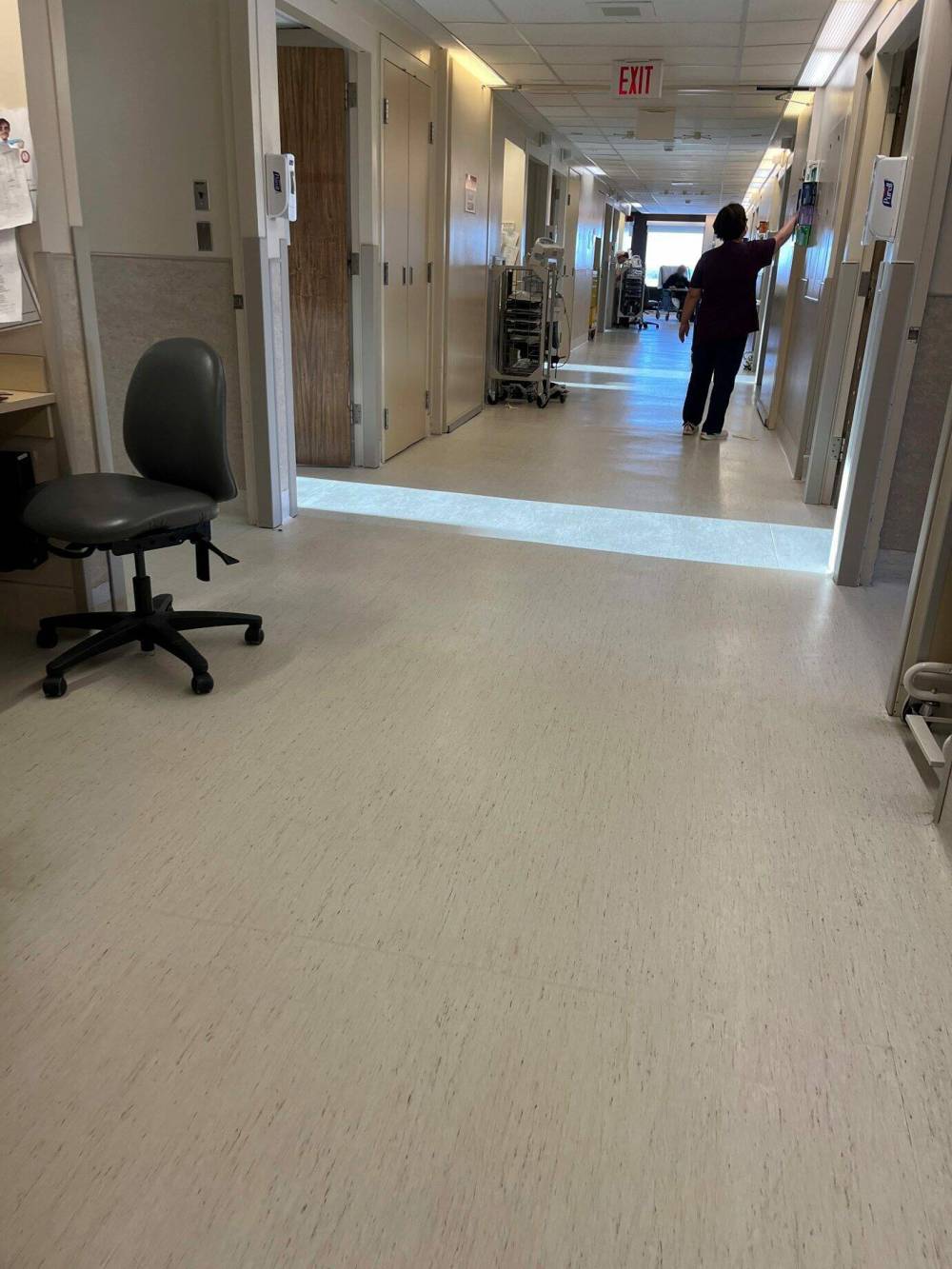
I took three photos while my mother was in the hospital. The first is just a picture of the hallway, pierced by knives of white winter light that reach through open doors; empty, save for an office chair, a few wheeled carts, a nurse with her back to the camera. I don’t know why I took that photo. I guess I wanted to mark what it was like, to walk that hall.
Seventeen months prior, I’d written about the COVID-19 outbreak on that same floor at VGH. It was one of the first and worst hospital outbreaks of the second wave. That outbreak, which was triggered when a patient was transferred from a COVID-19 suspected ward without notifying staff, would grow to 78 linked cases. Fifteen people died.
One of the victims was a health-care aide, Jean Claude Dianzenza Bahati. He was a leader in the local Congolese community, and beloved by his family. He’d been married 30 years to his wife, with whom he shared nine children and 10 grandchildren, who he adored. His daughters had been planning a surprise 61st birthday party for him, set for just weeks after he died.
He was the best of us: a helper, a healer, someone who shows up and does the work that we don’t always recognize but need someone to do. He was also the first health-care worker in Manitoba to die of COVID-19, put on the front lines by that same commitment to taking care of others.
I wondered if the nurses and aides caring for my mom had known him; they must have, I thought. But I didn’t ask.
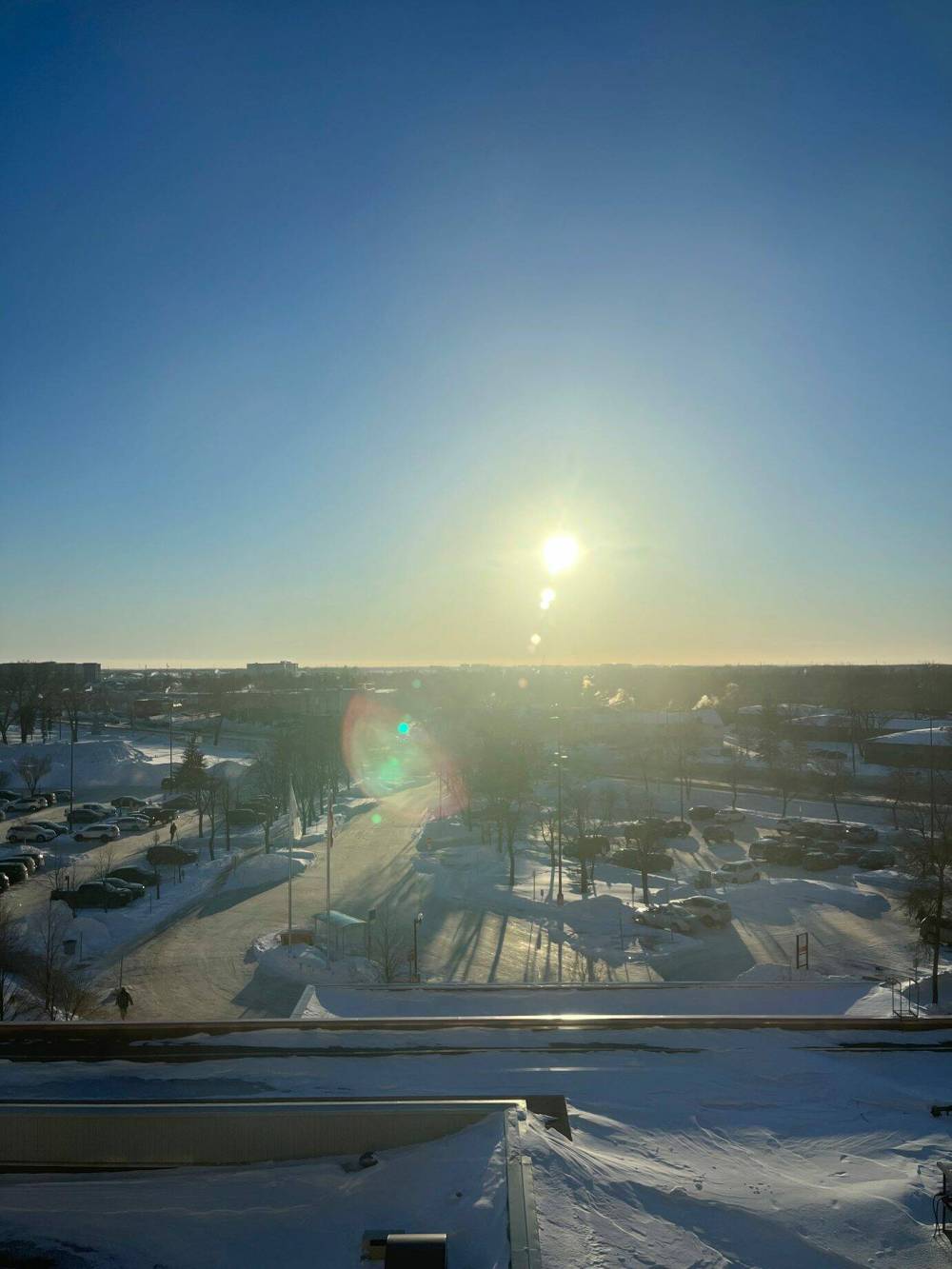
The second photo I took in the hospital was just a vista of a frozen city. A quick shot out the window of my mother’s room: houses, parking lot, barren trees. A horizon lined by the glare thrown from a charmless sinking sun, and the long shadows thrown by drifts of snow that stood resolute in the last breaths of an expiring afternoon.
It was a pretty view, if you ignored the loneliness of it, the frigid stasis that grips Winnipeg each winter. I don’t know why I took that photo. I guess I wanted to mark that boundary, the pane of window glass holding the line between what happens inside the hospital, the work that has for two years been mostly closed to us, and the lives that inch along outside.
Turning away from the window, I squinted. The light hurt my eyes. But my mother always loved the sun, so although one window blind was down to protect her face directly from the glare, she seemed happy that her feet bathed in the rest of it.
“It’s so bright in here, Mom,” I said, trying to find something to talk about that wasn’t about how she was dying.
She smiled, just like the doctors kept admiring.
“Yes,” she said. “It’s very nice.”
The nurse came in not long after that, the one that sang and prayed with her. She fussed with something on a cart and then breezed out, and when she was gone my mother my mother pointed at the way she’d left with a shaky finger.
“She’s very good,” my mother said. “She’ll talk to you afterwards, if you want.”
I nodded, but did not have the heart then to talk about an after.
“I’ve had three shots. Would you feel safe to hug me?”
Instead, when it was time to leave, I walked out into the hallway, comparing it again to my memory but being careful not to linger. I hoped I hadn’t unknowingly brought the virus in. I hoped that if I did, I could be forgiven. I hoped that all the staff who were taking care of her were getting enough rest, and that the last two years hadn’t taken too much from them.
And I thought about how I had barely seen my mother through the pandemic. I’d never felt safe to see her. I wasn’t careful enough, I knew, and she seemed so frail, especially, as we learned halfway through, with her heart; I couldn’t bear thinking that even if I did everything right, got my shots, checked symptoms, I might still be the one to give the virus to her.
When I walked in the room for the first time, my face hidden by folds of blue paper and even my eyes covered by the clear plastic shield, my mom lifted her arms as much as she was able, and in a hopeful, tentative voice, she said: “I’ve had three shots. Would you feel safe to hug me?”
In that moment I realized that all through the pandemic, I hadn’t really understood. I thought I was protecting her when I stayed away. I thought I was keeping her safe. But I never really asked her what she wanted. I never asked what protection meant, to a mother who had lived a long life, who was at peace, and who was waiting to see her daughter.
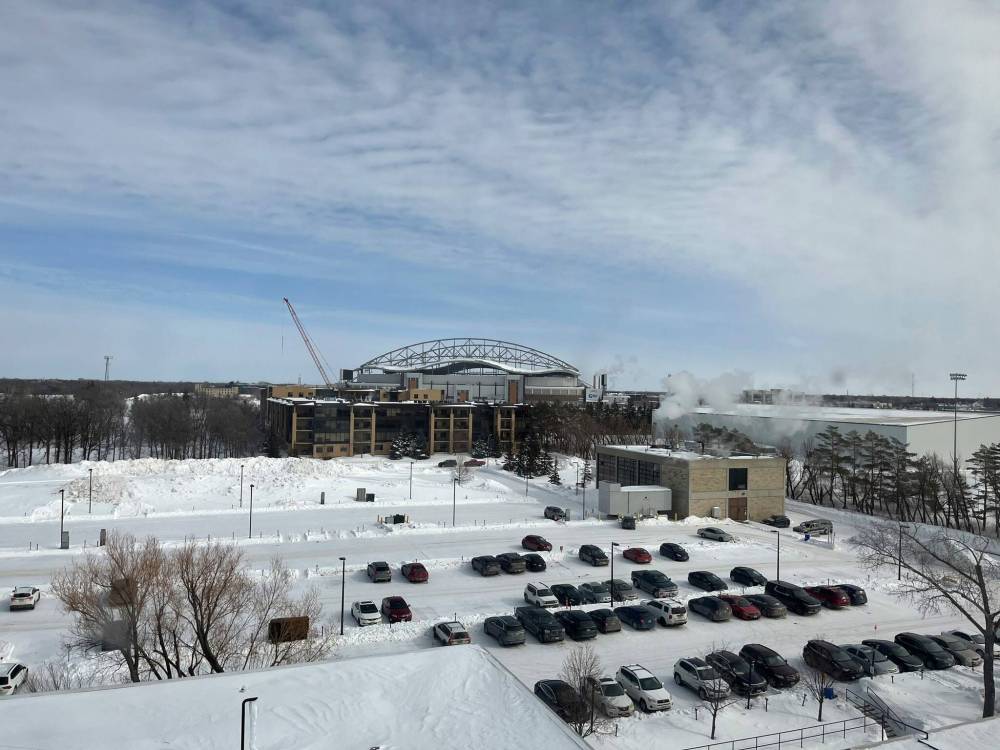
The day before my mother died, they moved her to a room that faced the river. A solo one, and big enough that more of her kids could come and see her, though she took her last breath before half of my siblings could get on planes. I took one more photo in the hospital, to remember. A view out a different window. Snow, cars and the curving crown of IG Field.
Mostly, though, it was a photo divided. Below, a world of streets and constructed things; above, the blue forever of a cloud-whipped prairie sky.
melissa.martin@freepress.mb.ca
Our newsroom depends on a growing audience of readers to power our journalism. If you are not a paid reader, please consider becoming a subscriber.
Our newsroom depends on its audience of readers to power our journalism. Thank you for your support.


